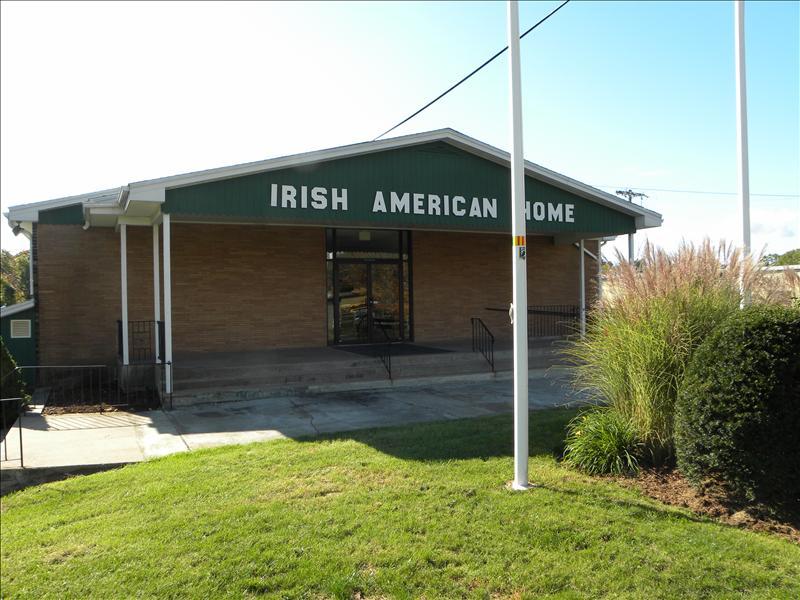All art is religious and reflects a certain vision of the world. Think about painting a tree and all the different ways it could be represented. It could represent the cross of Christ, the tree of knowledge, the tree of life, the tree of souls, etc.
Art reflects the worldview of the artist, all art is religious. In other words, religious art is art that reflects or supports the views of a particular religion.
In this broad category, you may come across devotional art, that is, art that has a personal appeal to a particular person’s devotion, and liturgical art as icons that support liturgical celebrations.
As much as it is religious art, that doesn’t make them so cheap. They are quite expensive works and full of value.
Also, religious paintings idealize, glorify, suggest, and tell the history of religion. They keep religious traditions alive and make it easier for people to visualize a concept or event that would otherwise be difficult to imagine using simple words.
They speak to the minds and hearts of different people and help convince non-believers to adopt a particular religious belief or culture.
For this reason, we will be showing the most expensive works of religious art to help you choose one to use for your design.
Table of contents
- What is Religious Art?
- Why is Religious Art Important?
- Why was Calligraphy used in Religious Art?
- What types of Works of Religious Art are common?
- Most Valued/Expensive Works of Religious Art in 2024
- The Last Supper – by Leonardo Da Vinci
- Adoration of the Magi by Leonardo Da Vinci
- Christ Crucified by Diego Velázquez
- The Coronation of the Virgin by Diego Rodriguez de Silva y Velazquez
- The Virgin of the Rocks by Leonardo Da Vinci
- The Elevation of the Cross by Peter Paul Rubens
- Virgin of the Grapes by Pierre Mignard
- The Tears of Saint Peter by El Greco
- L’Innocence by William-Adolphe Bouguereau
- The Disputation Over the Most Holy Sacrament by Raphael
- Adoration of the Shepherds by El Greco
- Immaculate Conception by Bartolome Esteban Murillo
- Angelus by Jean-Francois Millet
- Annunciation by Filippo Lippi
- The Descent from the Cross by Van der Weyden
- References
What is Religious Art?
According to Wikipedia, Religious art or sacred art is artistic imagery that uses inspiration and religious motifs and often aims to elevate the spirit to the spiritual.
Sacred art involves the ritual and cultural practices and the practical and operational aspects of the path of spiritual fulfillment in the artist’s religious tradition.
Why is Religious Art Important?
Religion has influenced art since time immemorial. Since the time of the caveman, we have seen evidence of religious art as images of deities and practices. In history, religious art has also played an important role in developing ideas about the religion and beliefs of a certain kingdom.
Even today, religious art is important in the following way:
- Because it creates easily identifiable images from various epics and helps us to preach mass incidents.
- It also represents your beliefs and your faith. People only keep those religious images they believe in. (https://bellarinova.com)
- Religious paintings are important in shaping characters and influencing human faith.
- helps portray faith in an aesthetically beautiful way using symbols and the like.
Why was Calligraphy used in Religious Art?
Most religious art sometimes does have calligraphy on them. so if you ever wonder why these artworks carry calligraphy on them, it’s just so simple. The major reason why calligraphy is used in religious works of art is:
- to have pictures depicting important events that would be abstract, and therefore not idolatrous, or idol-worshiping.
Though there are other reasons why most religious artworks carry calligraphy on them.
The development of sophisticated calligraphy as an art form is not unique to Islamic culture. Other examples include Chinese and Japanese calligraphy and illuminated Bibles from Northwest Europe, including the famous Book of Kells.
However, in the Islamic world, calligraphy has been used to a greater extent and in a surprisingly varied and imaginative way, which has taken the written word far beyond pen and paper in all art forms. and all the materials.
For these reasons, calligraphy can be considered a uniquely original feature of Islamic art. The genius of Islamic calligraphy lies not only in the infinite creativity and versatility but also in the balance that calligraphers find between the transmission of a text and the expression of its meaning through a formal aesthetic code.
What types of Works of Religious Art are common?
For ages, the most common type of religious art has been painting and portable sculpture. However, the form of religious art with the greatest visual impact is undoubtedly architecture.
Some of them include:
- Egyptian Pyramids
- The Stonehenge stone circle
- The Hagia Sophia in Istanbul
- Umayyad Great Mosque of Damascus
- Dome of the Rock in Jerusalem
- French Gothic Cathedrals
- St Peter’s Basilica in Rome
- The Taj Mahal
However, the religious authorities have consistently turned to architecture to awe and influence their congregations.
Interior and exterior artistic decorations for these Christian, Islamic, and Buddhist churches typically include a wide range of decorative arts, including calligraphy, ceramics, crafts, icons, illuminated manuscripts, metalwork, mosaic, stained glass, tapestry, and wood-carving.
Most Valued/Expensive Works of Religious Art in 2023
The Last Supper – by Leonardo Da Vinci
Price: $70,040.99
Location: Milan, Italy
In 1495, Leonardo da Vinci began what would become one of the most influential works of art in history: The Last Supper
The Last Supper is Leonardo da Vinci’s visual interpretation of a related event in the four Gospels (books of the Christian New Testament). The day before Christ’s betrayal by one of his disciples, he called them together to eat, to tell them that he knew what was going to happen, and to wash their feet (a gesture that symbolizes that they were all equal in the eyes of the Lord).
As they ate and drank together, Christ gave the disciples explicit instructions on how to eat and drink in the future, in memory of him. It was the first celebration of the Eucharist, a ritual that is still practiced.
Specifically, The Last Supper represents the next few seconds of this story after Christ dropped the bomb that a disciple would betray him before dawn, and the twelve reacted to the news with varying degrees of horror, anger, and Shock.
Adoration of the Magi by Leonardo Da Vinci
Price: $7,641.99
Location: Uffizi, Florence
The Adoration of the Magi is an unfinished ancient painting by Leonardo da Vinci. Leonardo received the order of the Augustinian monks from San Donato to Scopeto in Florence, but he went to Milan the following year, leaving the image unfinished. It has been in the Uffizi Gallery in Florence since 1670.
The Virgin Mary and Child have a representation in the foreground and form a triangular shape with the Three Wise Men kneeling in adoration. Behind them, a semicircle of figures accompanying him, including what may be a self-portrait of the young Leonardo (far right).
In the background, on the left, is the ruin of a pagan building, in which workers can be seen, apparently under repair. On the right, men on horseback and a sketch of a rocky landscape.
Christ Crucified by Diego Velázquez
Price: $4,450.99
Location: Prado Museum, Madrid
Here is a serene representation of Christ after death by a Spanish artist from Seville named Diego Velázquez. It measures 98 x 67 inches.
Velázquez’s crucified Christ represents Christ with a body of classical proportions, representing the perfect man, while blood slowly flows from his wounds, along his body and the wood of the cross, transmitting a feeling of loneliness, of silence and rest, instead of showing the agony of the passion of Christ.
It is definitely a devotional painting that invites silence and meditation.
The Coronation of the Virgin by Diego Rodriguez de Silva y Velazquez
Price: $1,257.99
Location: Museo del Prado, Madrid
This painting is an oil on canvas representing the coronation of the Virgin Mary in heaven by the Holy Trinity: the Father, the Son, and the Holy Spirit. It is a common theme seen in the European Baroque work of the time and is an excellent and very attractive example of Marian art.
He was commissioned for the oratory of Queen Elizabeth of Bourbon, the Queen Consort of Philip IV of Spain. It was intended to complete a series of beautiful paintings titled “Las Fiestas de Nuestra Señora” that was already hanging in the chapel. In other words, could explain the smaller canvas size than usual while Velázquez tried to adapt his work for others in the series.
This clear contrast in theme and style is intriguing, as it shows Velázquez’s clear ability and adaptability.
The Virgin of the Rocks by Leonardo Da Vinci
Price: $1,244.99
Location: Louvre, Paris
The Virgin of the Rocks (sometimes The Virgin of the Rocks) is the name used for two paintings by Leonardo da Vinci, on the same subject, and of an identical composition, except for two significant details. One painting is usually hung in the Louvre, in Paris, and the other in the National Gallery, in London.
The two paintings show the Virgin and Christ Child with the child John the Baptist and an angel, in a rocky setting that gives the paintings their usual name. The important differences in composition are in the gaze and the right hand of the angel.
The Elevation of the Cross by Peter Paul Rubens
Price: $625.99
Location: Cathedral of Our Lady, Antwerp
The altarpiece of the elevation of the cross is a masterpiece of a Baroque painting by the Flemish painter Peter Paul Rubens. The work was originally installed on the main altar of the Church of Saint Walburga in Antwerp (since its destruction) and is now in the Cathedral of Our Lady of Antwerp.
This triptych (a painting, usually an altarpiece, consisting of two outer “wings” and a central panel) is impressive in size, measuring 15 feet high and 21 feet wide when open. The original frame, unfortunately, lost, would have made the painting even more impressive in size. Due to its size, Rubens painted it in place behind a curtain.
Four saints in associate with the Saint-Walburga church are outside the wings (visible when the altarpiece closes). Saints Amandus and Walburga on the left and Saints Catherine of Alexandria and Eligius on the right.
Virgin of the Grapes by Pierre Mignard
Price: $587.99
Location: Department of Paintings of the Louvre
La Vierge aux raisins was painted by the French artist Pierre Mignard in 1640 and exhibited at the Louvre. The size is 47.6 x 37 inches.
In the background, the dark landscape, partially covered with a curtain in the foreground, is in silence and harmony. The baby Jesus looks at us softly under his mother’s thin veil; The veil symbolizes purity.
The Virgin’s blue coat alludes to the sky and the red color evokes her love. Apples could be a sign of original sin and the grapes that the Virgin and Child hold in their hands symbolize the Eucharist and the sacrifice of Christ our Redeemer.
As a mother, I instantly connect to this portrait. There is an expression of great tenderness here. I have a little boy and he likes grapes! What more can I say? This painting really inspires me to be a more patient and loving mother as I live through the scene called “The Terrible Two”.
The Tears of Saint Peter by El Greco
Price: $464.99
Location: The Phillips Collection
The painting is known as a defining image used by supporters of the counter-reform movement to show the humanity of all the saints, including that of Saint Peter. As a painting, El Greco created it for private projections in order to create a deep and personal link between the follower and the image.
The painting contains a series of characteristics that define and are visible to viewers. The most important of these are the eyes, the windows of the soul. They express their sorrow and deep sadness for their actions in the denial and betrayal of Jesus during the passion.
This shows him appealing directly to God and heaven for his actions. It also displays a number of key symbols that reflect not only Peter’s role for Jesus but also his later position as God’s representative on earth.
To this end, the image shows a series of key symbols and characteristics that help identify who Saint Peter was and how he is represented in the Christian religion. The first symbol in this regard is the keys that we carry on its left side. They symbolize the keys of the Holy Sea and indeed the keys of the Kingdom of Heaven.
L’Innocence by William-Adolphe Bouguereau
Price: $397.99
Location: Private Collection
This masterpiece, L’Innocence, came into existence by French painter William-Adolphe Bouguereau in 1893. It is the only painting shown here that I have not seen in person because it comes from a private collection. When you look at this image, you will see purity and tenderness in the exchange of love between a mother and her child.
The use of religious art to inspire a desire for holiness is remarkable. It helped me find divine inspiration, not only because the paintings are exquisite, but because of their heavenly meaning. They have an invaluable essence that is difficult to obtain in a modern world.
The Disputation Over the Most Holy Sacrament by Raphael
Price: $396.99
Location: Apostolic Palace, Vatican City
The dispute of the Blessed Sacrament represents the victory of Christianity over the multiple philosophical tendencies illustrated in the fresco of the school of Athens painted on the opposite wall.
In the painting, Raphaël created a scene that covered both heaven and earth. Above, Christ is surrounded by a halo, with the Blessed Virgin Mary, Jean-Baptiste on the right and on the left.
Other diverse biblical figures like Adam, Jacob, and Moses are on the sides. God the Father sits on Jesus, portrayed reigning over the golden light of heaven, and under the feet of Christ is the Holy Spirit. On the opposite sides of the Holy Spirit are the four gospels, supported by a putto. Beneath the altar is the custody.
Adoration of the Shepherds by El Greco
Price: $350.99
Location: Madrid’s Museo del Prado
It shows us the wonder on the faces of the shepherds who contemplate the luminous image of the Child Jesus, which the Virgin reveals with great tenderness. The kneeling shepherd, who worships with his hands folded reverently, could be a self-portrait representing El Greco’s growing devotion.
If you’ve seen this painting first-hand, you’ll agree that the vibrant colors of the characters’ clothing are one of the most captivating features, as well as the dramatic use of light emanating from the Child Jesus, making Scene so real.
Immaculate Conception by Bartolome Esteban Murillo
Price: $338.99
Location: Museo del Prado, Madrid, Spain
Basically, the Immaculate Conception was painted by the Spanish artist Bartolomé Esteban Murillo. There are several works of art with this title in the Prado Museum This one measures almost 108 x 75 inches long.
The doctrine of the Immaculate Conception holds that the Virgin Mary, the pure container that would carry Jesus Christ, was conceived without original sin. The Holy Roman Catholic Church teaches that, from its conception, Mary received the graces that are generally granted by baptism after the birth of a child.
Angelus by Jean-Francois Millet
Price: $335.99
Location: Musee d’Orsay, Paris
This unusual example of Christian art expresses a deep sense of religious devotion and became one of the most widely reproduced religious paintings of the 19th century, with engravings exhibited by thousands of ardent householders throughout France.
However, Millet painted it with a feeling of nostalgia instead of a strong religious feeling. In 1865, he admitted that the idea of the Angelus occurred to him after a childhood memory of his grandmother, who had always insisted that the family stop working in the fields when he heard the church bell ring for the Angelus.
It was commissioned by the American art collector Thomas Gold Appleton (1812-1884), although he never picked it up from the artist. Millet sold it in 1859 for less than 1,000 francs (about $ 200).
Thirty years later, it was sold to the Parisian philanthropist Hippolyte Chauchard (1821-1909) for 750,000 francs.
Annunciation by Filippo Lippi
Price: $333.99
Location: The National Gallery
The Annunciation is a painting by the Italian Renaissance painter Filippo Lippi, completed around 1443–1450. It is hosted in Alte Pinakothek, Munich, Germany.
It represents the Virgin humbly accepting her role as mother of Jesus, with one hand on her chest, while the dove, symbol of the Holy Spirit, is given to her. The angel is kneeling next to her, also with a hand on his chest as a sign of greeting.
The Descent from the Cross by Van der Weyden
Price: $319.99
Location: Museo del Prado, Madrid
This panel was painted by Belgian artist Roger van der Weyden. The Descent from the Cross is an old Flemish painting, with almost life-size figures, and is an 86.5 × 103-inch triptych located in the Prado Museum, Madrid.
This masterpiece illustrates the pain experienced by the Virgin for the suffering and death of her Son. Joseph of Arimathea, Nicodemus, and a third man hold the body of Jesus; Our Lady passed out and is supported by Saint John and some of the holy women who witnessed the crucifixion.
Look at the Virgin’s face, which is very pale. The blue of her dress really contrasts with her complexion.
References
- getfed.com – 12 Inspiring Religious Paintings & Their Meanings
- ranker.com – List of Famous Religious Image Paintings
- quora.com – What is religious art?





